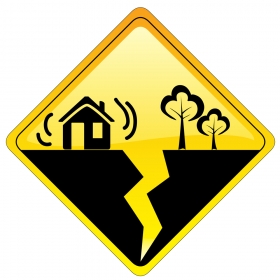Oklahoma and Earthquakes - Is Fracking to Blame?

Which state is the current earthquake capital of the United States? If you guessed California, your data is sadly out of date. Believe it or not, Oklahoma, the new center of quivering land, has twice as many earthquakes as California does at this point. We're not just talking minor shaking, either. Oklahoma averages one earthquake that measures at least 3.0 on the Richter scale every single day.
The presumed culprit for this boom in seismic activity is fracking. The controversial technique for extracting gas and oil has become a big business in Oklahoma in the past few years. As a point of comparison, before fracking became a staple in Oklahoma, the state experienced one earthquake that registered over 3.0 once a year — now it's a daily occurrence.
Here's where things get tricky: from a scientific perspective, nothing has been proven. As we often hear from the scientific community, correlation does not equal causation. In other words, just because a lot of earthquakes have occurred in conjunction with fracking doesn't necessarily mean that one is responsible for the other. At best, existing research seems to show that fracking is "likely" the cause of seismic events.
However, it's not as though Oklahoma is the only state to experience this rise in earthquakes: Ohio, Kansas, Colorado, and Texas have noted similar activities. As a result, some states have either considered or actually put a moratorium on fracking until they can more accurately determine whether it is responsible for the rise in quakes in their area. Some government officials believe that given the overwhelming correlation, it's irresponsible and dangerous to continue fracking until research can assess the situation more definitively. On Friday, after two unusual quakes took place by a fracking well, Colorado decided to suspend fracking activities for at least 20 days.
Continue reading at ENN affiliate Care2.
Earthquake sign image via Shutterstock.
2014©. Copyright Environmental News Network